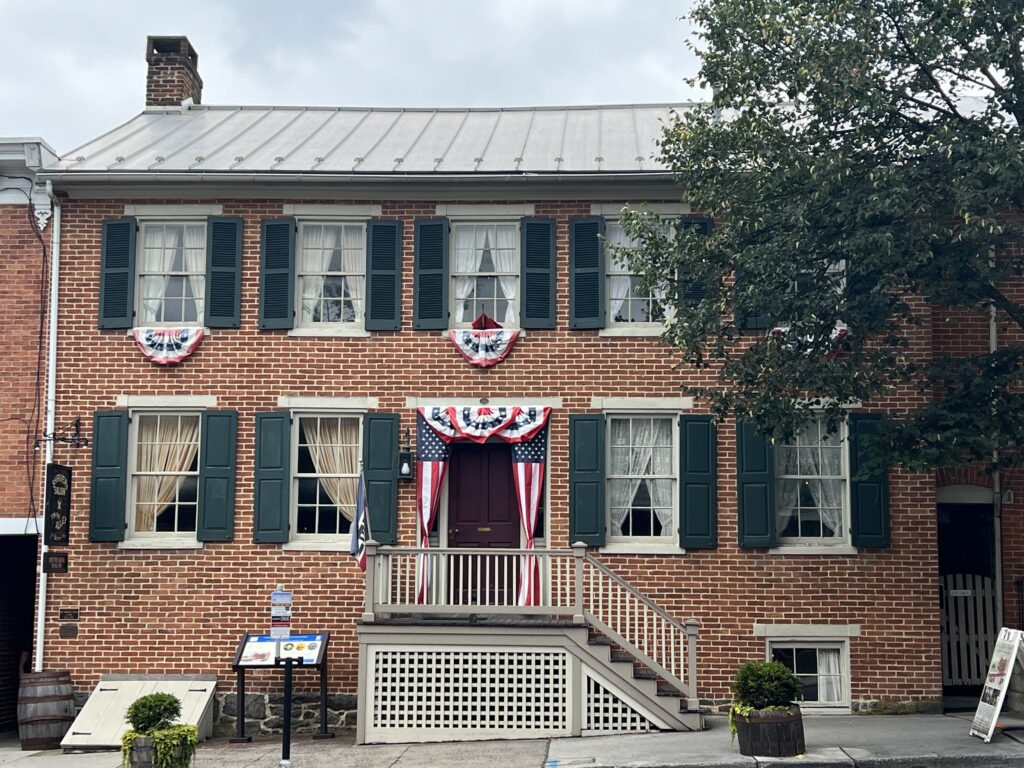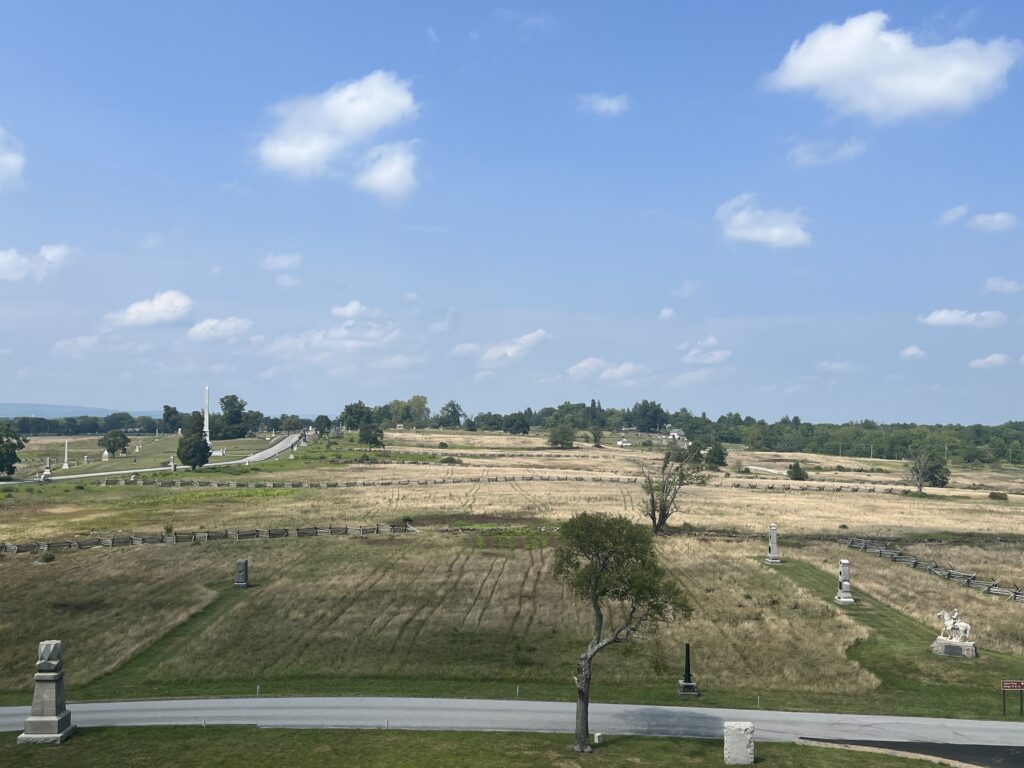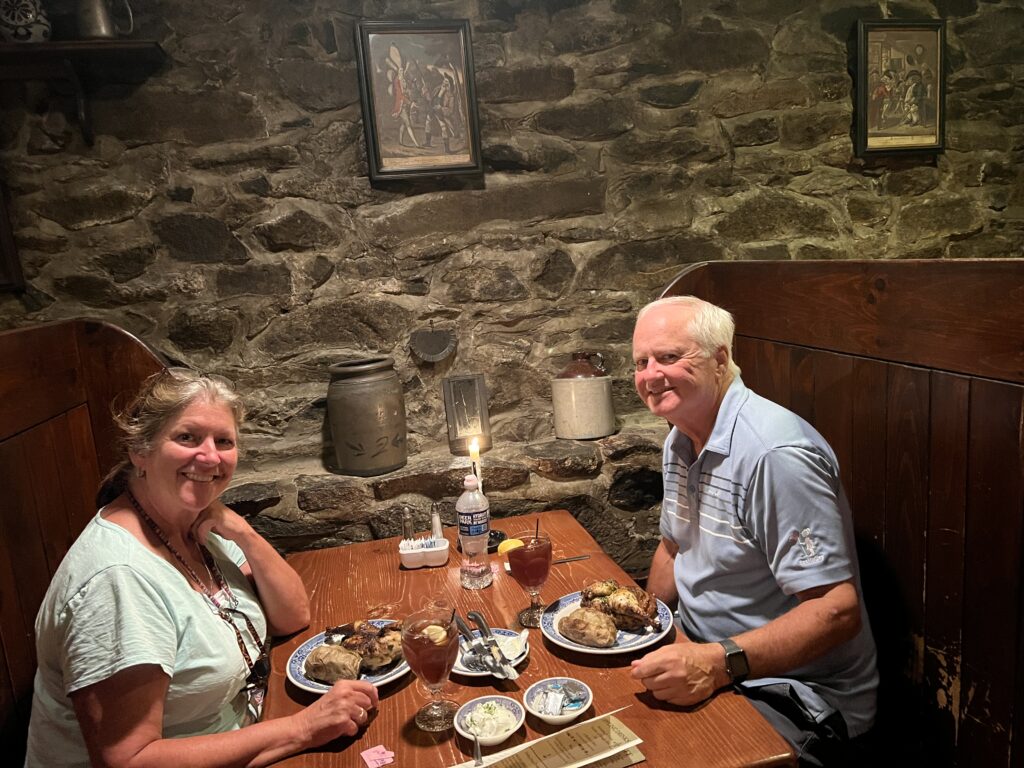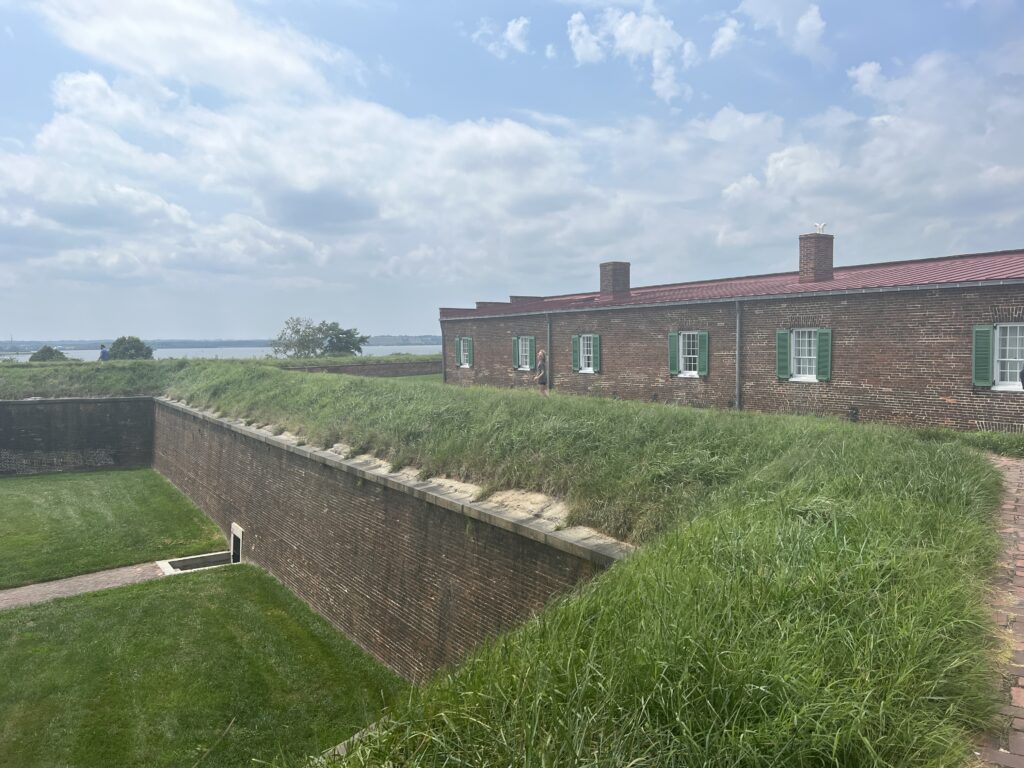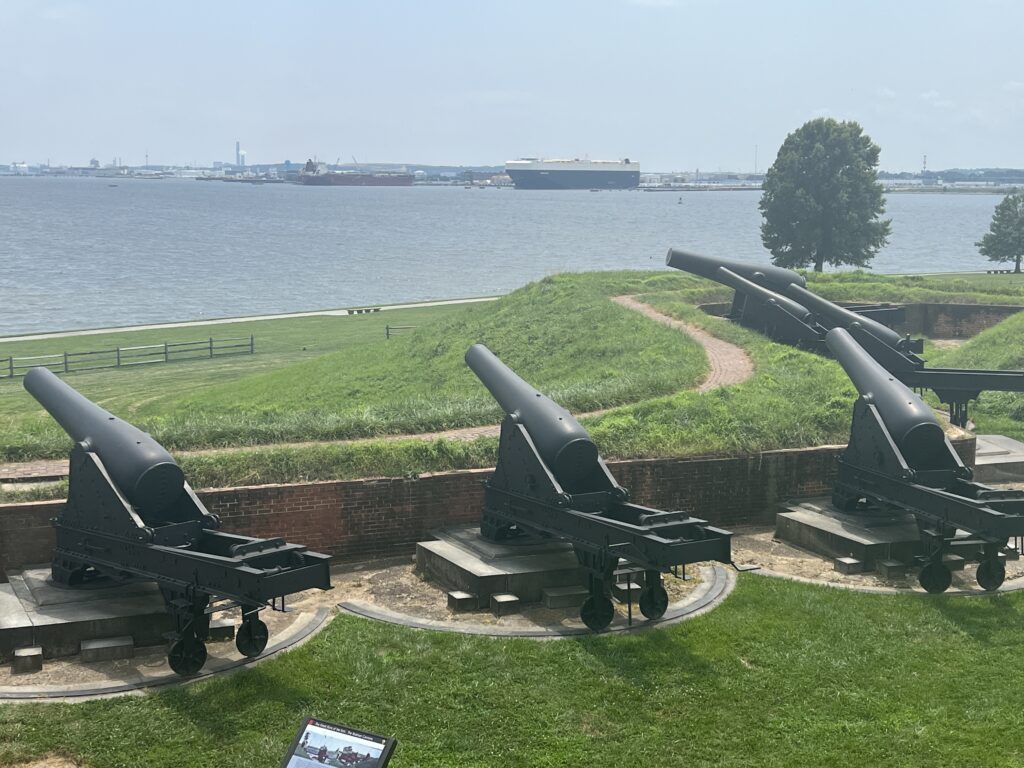- 47.2 miles
- 5 hours 45 minutes
- 8.2 mph average speed
- 4-7 mph winds
We passed several more lighthouses on our way to Baltimore. As we entered Baltimore harbor, we went under the Frances Scott Key Bridge, passed by the remains of Fort Carroll, a replica of the Lazaretto Point Lighthouse and Fort McHenry.
Fort Carroll was designed by Robert E. Lee and named for Charles Carroll, the last living signer of the Declaration of Independence. Construction began in 1848 but was never completed and it was never used as a fort. In 1864, it was flooded by torrential rains and declared vulnerable and obsolete. It stored mines during the Spanish-American War but was abandoned in 1920.
Lazaretto Point Lighthouse was the first on the Chesapeake to receive electricity in 1914. It was torn down in 1926 but recreated in 1985 from the original blueprints in order to preserve Baltimore’s history.
Fort McHenry was the site of one of the most pivotal battles of the War of 1812. After the British burned the capitol in Washington, D.C., Baltimore became their next target in September of 1814 but the American forces far outnumbered the British fleet and saved the city from defeat. In the meantime, Frances Scott Key had gone to Baltimore to negotiate the release of his friend, Dr. William Barnes, who had been taken prisoner but the British. Key was able to locate the ship where Barnes was being held and negotiated his release but they were required to remain on the ship until the bombing was over. Once the bombing ceased, Key kept looking through a spyglass to see if the American flag or the British flag was flying over the fort when he finally saw the American flag and began writing the words to what would eventually become the “Star Spangled Banner”. The British had withdrawn after a 25-hour bombardment of the Fort McHenry. After the British defeat at the Battle of Baltimore, both countries signed the Treaty of Ghent, basically calling the war a draw.
Once we had docked at the marina, we met up with our friends, Ronda and Bob and met new friends, Christi and Rick on Inked Mermaid. We all went to a nearby park that was having a festival and concert. Ronda and Ellen got Fairy Hair!
We rented a car and drove to Gettysburg the next two days and then visited Fort McHenry with Lynnae and Jerry the following day. We are sure getting our fill of history! After our tour of Fort McHenry with Lynnae and Jerry, the four of us went to Captain James Seafood Palace for some Maryland crabs!
The three day Battle of Gettysburg, in July of 1863, was the pivotal battle of the Civil War as well as the largest and bloodiest battle ever fought on American soil. Being there and seeing where the battle took place had a profound impact on us. We enjoyed seeing all the pre-civil war buildings, particularly since there are none left in Atlanta! We took a bus tour of the battlefield the first day and drove our rental car through it the next day.
We visited the Shriver House in Gettysburg which gave us a glimpse of civilian life in Gettysburg during the Civil War. The house was built in 1860 and the Shrivers moved in to the house four months before the Civil War broke out. George Shriver had been off fighting for two years by the time troops made their way to Gettysburg. Once his wife, Hettie, heard the nearby canons, she decided she and their two daughters would be safer at her parent’s farm three miles down the road. Little did she know, that was the location where some of the worst fighting took place. They stayed at the farm for a couple of days and helped tend to the wounded soldiers. While they were gone, Confederate sharp shooters occupied their home and shot at Union soldiers from the attic. It is hard to imagine the sites that Hettie and her daughters witnessed and walked through the town as they headed back home after the battle and then returned to a house in shambles and this is just one of many stories of the civilians impacted by the battle.
We also visited the Eisenhower National Historic Site which was adjacent to the battlefield and the farm of Dwight and Mamie Eisenhower and the only home they ever owned. The house is furnished as it was in 1967 with 98% original furnishings. It is difficult to describe the vast beauty surrounding the property in addition to it being in the midst of the battlefield.
Next, we visited the Wills House, built in 1814 and the home of the David Willis family in 1863. Willis is the “father of the Soldier’s National Cemetary”, a burial ground for the Union dead. Abraham Lincoln was a guest of David Wills on the eve of the dedication ceremony on November 19, 1863 where Lincoln delivered his Gettysburg address and it is believed that Lincoln completed and rehearsed the speech while staying in the house.
To top off our week in Baltimore, Kevin’s daughter, Becca, and her partner, Mona, arrived from Atlanta on Monday. They will be with us for six days and we will travel to St. Michaels and Annapolis before bringing them back to Baltimore to fly home. Since they were anxious to have some Maryland crab, we just had to take them to Captain James Seafood Palace!









